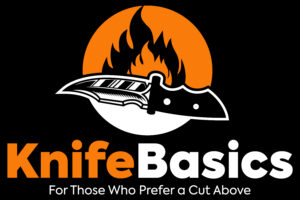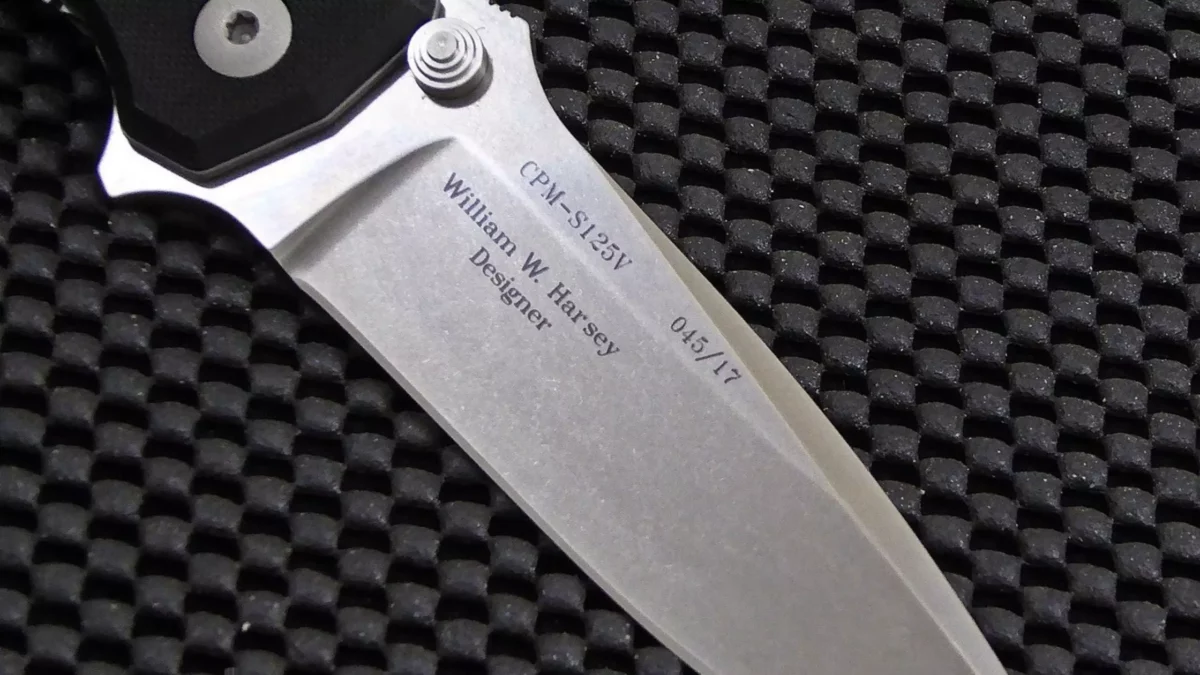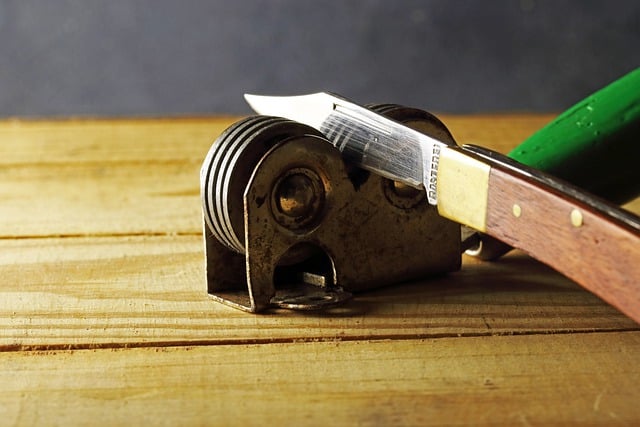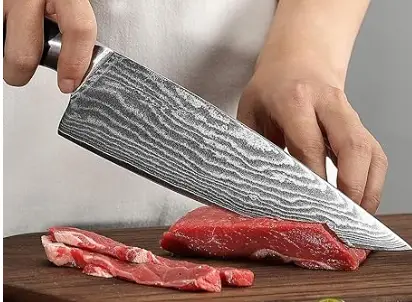What is S125V Steel?
It is also important to note that Crucible industries manufacture this steel following the Crucible Particle Metallurgy process.
This production process stands out among other conventional steel manufacturing processes because it ensures the uniform distribution of the metal particles. The consistency of fine particles improves steel’s edge retention and wear resistance.
CPM S125V Steel Composition
- Carbon C 3.30%: Increases the edge retention, hardness and tensile strength. It also improves steel resistance to wear, abrasion and corrosion.
- Chromium Cr 14.00%: Formation of Chromium carbides Increases hardness, tensile strength and toughness of the blade.
- Molybdenum Mo 2.50%: It improves machinability and hardness.
- Vanadium V 12.00%: Increase wear resistance and toughness, it also improves corrosion resistance. High vanadium content enables formation of Vanadium Carbides.
Properties of CPM S125V steel
S125V Steel Hardness
The Rockwell hardness of S125V is 63-65 HRC. This steel offers a wide range of hardness because it differs from the heat treatment used by different manufacturers. Also, the right heat treatment attains the highest hardness level for any CPM stainless steel at 65HRC.
S125V Steel Wear resistance
With high amounts of Vanadium in its composition, high carbides form that contribute to the high wear resistance. This means that blades made from this steel can withstand abrasion and serve you for a long time.
CPM S125V is mostly used to manufacture high-end knives, which will be expensive, but the high price tag will be worth it because you will not be required to make another knife purchase sooner.
S125V Steel Edge retention
Edge retention measures how long steel maintains a sharp edge. S125V knives remain sharp for a long time due to the consistent fine vanadium carbide particles.
If you are major on a blade that does not require frequent sharpening, the varieties of S125V will not disappoint you.
S125V steel edge retention is better than most steels out there; it is better than k390 steel, CPM 10V steel, and CPM S90V. However, it is low than CPM 15V, Rex 121, and Z-max steel.
S125V Steel Toughness
The toughness and hardness of steel lay on opposite spectrums. With increased hardness, the toughness of steel reduces, and this is the case with S125V. Because of the high hardness, S125V steel is brittle, and its blades cannot be used for very challenging applications.
Its level of toughness can be described as decent because the blades can handle simple applications without chipping or breaking. However, if you are looking for an outdoor knife to handle very tough cutting jobs, get a knife made with tougher steel.
The toughness of S125V steel can be compared to the likes of S110V and N690 steel, and they offer almost identical toughness. This is low compared to VG10, Niolox, S35VN, and SPY 27 steel; it is, however, higher than that of Rex 121 and Maxamet steel.
S125V Steel Corrosion resistance
CPM S125V is stainless steel, meaning that its blades do not rust easily. This is not to say that they do not rust at all. They do rust if left under unfavorable conditions like in water or used in a humid and salty area without proper care.
CPM S125V steel offers high corrosion resistance while still maintaining high wear resistance. Its corrosion resistance can be compared to CTS 204P and M390; it is less than S110V steel, nitrogen-based LC200N, and BD1N steel.
The secret to having blades of this steel last long without rusting is tender love and care. This entails washing and drying the blades after use. The two-minute routine will keep your knives in good condition for a very long time.
Sharpening S125V Steel
The ease of Sharpening a knife blade is determined by the hardness and wear resistance of the steel it is made from. Being very hard steel with excellent wear resistance, getting a sharp edge with an S125V knife is not easy.
S125V steel contains many Vanadium Carbides that are harder than most sharpeners made of aluminum oxide like belts, sandpapers, and sharpening stones. It will be easier to get a sharper edge with diamond-made tools and CBN stones.
S125V Steel vs other steel
S125V vs M390
Crucible CPM S125V steel is fine-grained with an excellent uniform Microstructure than Bohler M390 steel. S125V has a large volume of fine Vanadium Carbides compared to M390 steel. S125V steel offers higher hardness than M390 steel.
The higher hardness and refined microstructure gives S125V better edge retention and wear resistance than Bohler M390 steel. The quest for high wear resistance and hardness in the development of S125V steel reduces the corrosion resistance compared to M390 steel.
You will get a more corrosion resistance knife with M390 steel than S125V due to the increased level of chromium content in its alloy.
The higher Hardness of S125V provides great wear resistance, however, with increased hardness, the toughness is lowered. M390 is tougher knife steel than S125V knife steel. It will be much easier to work with M390 steel than S125V for knife makers due to the ease of grinding.
S125V vs S110V
S110V is closely related to CPM S125V. Their properties are closely interchangeable and are both difficult to work with due to how difficult they are to grind. They both offer extreme wear resistance while being stainless. Regarding edge retention S125V beats S110V due to the higher hardness brought about high vanadium carbides content.
S110V steel beats S125V knife steel in toughness due to the slightly low hardness. Typically harder steel will tend to be more brittle and prone to chipping. While both are stainless steel, S110V steel will offer better corrosion resistance than S125V.
S125V vs Rex 121
Both CPM Rex 121 and S125V are extremely hard steels with excellent wear resistance properties. Knives made from either S125V or Rex 121 steel will offer outstanding edge retention. CPM Rex 121 will, however, offer slightly more edge retention than S125V. The only steel that offers almost the same edge retention as Rex 121 is Maxamet steel.
CPM S125V nevertheless beats Rex 121 steel in terms of corrosion resistance as it is stainless steel while Rex 121 is not. S125V knife steel will also beat Rex 121 knife steel in toughness as it offers slightly less hardness.
It is also easier to sharpen S125V than to sharpen Rex 121 though both are generally hard and require sharpeners made from Diamond or CBN stones.
Is CPM S125V good knife steel?
The major challenge is that the hardness makes the steel difficult to sharpen, and also, it is difficult to work with. The long and hard manufacturing process makes production expensive, contributing to the knives’ high price.



